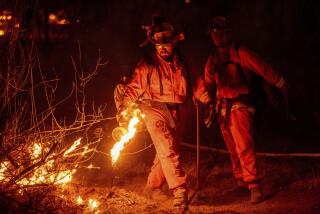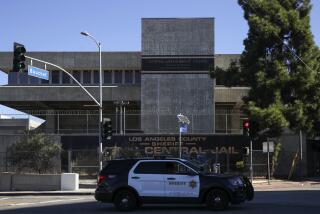Crime: Prison Proposal, Economics and the Image Problem
While opponents of the proposal to build a prison in Compton cry foul--that a prison will give Compton a bad image--a 1993 report produced by the city indicates that Compton already has “a bad image.” The report reveals an increasingly high crime rate in the city. According to the report, titled “The City of Compton, A California Community at Risk,” there were 59 homicides, 85 rapes, 1,135 robberies, 1,115 aggravated assaults, 1,750 burglaries and 1,486 auto thefts in Compton in 1993 alone.
A special report to Sen. Robert Presley, chairman, Joint Committee on Prison Construction and Operations in 1985, reveals that in cities where prisons have been built, crime was reduced significantly. It is believed that the reduction in crime can be attributed to the large number of uniformed peace officers visible in the community. In the city of Lancaster, some citizens say they even feel safer knowing the prison is nearby. “After all,” they say, “it is not the criminals who are locked away that frighten us. It is those that are still at large.”
The Senate study also showed a significant increase in property values. It is believed that this increase can be directly attributed to the existence of a prison in the community. As crime decreases as a result of the presence of an increased number of uniformed peace officers, the interest in purchasing property increases. People believe the community is then safer to live in.
Compton’s image is also that of producing gangs, drug dealers and notorious rap groups whose music promotes violence. The California Department of Corrections would work with Compton College in training corrections officers who live in Compton, and who would be positive role models for children.
Compton also has many alleys filled with debris, vacant lots overgrown with weeds and graffiti. In cities where there are prisons, the corrections department has an excellent public service program. The city’s community beautification program is enhanced tremendously, and its costs for maintenance are cut significantly through the maintenance services performed by low-security inmate crews. The Monterey Bay coastline, for example, is kept clean and well-tended by an inmate crew from Soledad Prison.
In short, prisons make good neighbors. They provide a strong economic base, create hundreds of jobs and supply and supervise inmate workers for vital community service projects. Corrections staff enrich community life. Many actively participate in local organizations and issues.
A prison is a clean, stable, recession-proof industry. It provides permanent employment to 600 to 1,600 people. This translates to an annual payroll of $20 million to $52 million--money that helps fuel the local economy. Every year, a prison also buys $1 million to $4 million in goods and services from the surrounding area. As local businesses prosper, more job opportunities develop. In fact, it’s estimated that one new job in the community is created for every two prison jobs.
WILLARD H. MURRAY JR.
Assemblyman, 52nd District
More to Read
Sign up for Essential California
The most important California stories and recommendations in your inbox every morning.
You may occasionally receive promotional content from the Los Angeles Times.









